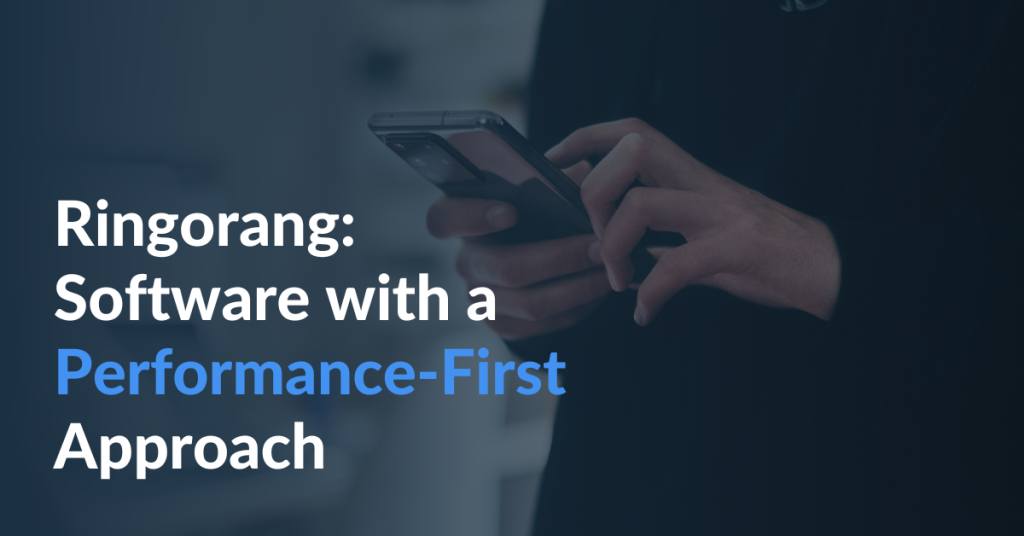Chief Vision Officer Robert Feeney presented Ringorang: Software with a Performance-First Framework, to the Digital Learning Forum alongside Ken Stockman, Senior Learning Strategist.
Key Takeaways
- The Performance-First Framework fulfills the promise of what learning should be doing for the business.
- The learning organization becomes a strategic partner, transforming from a cost center to a growth driver.
- The Performance-First Framework drives recall and retention of existing learning programs at the point of need, providing available support when an employee needs it outside of the training.
- Employees form habits from the learning that they can activate in their day-to-day work.
The session summarized the evolving link between corporate learning and business performance and illustrated the application of Ringorang and its methodology at IBM and other organizations.
Stockman specifically highlighted why he was driving the Performance-First Framework to his global learning organization: To involve learning leaders in the day-to-day performance of the organization. Not just individual performance goals, but goals that impact the bottom line of the business.
Shift to the Performance-First Framework
While existing learning design frameworks are still important, what’s lacking is the impact those strategies have on the performance of the business.
Common metrics for success, such as in the Kirkpatrick Model, require learning designers to ask employees whether they’re applying the training in their day-to-day work. Survey data is, of course, valuable. But it does not show if employees are truly applying the knowledge and skills presented in actionable data points.
Another challenge faced with the current learning-first approach to training is the Ebbinghaus Forgetting Curve, which is the main reason Stockman initially sought a solution like Ringorang.
The Ebbinghaus Forgetting Curve states that information is lost over time when it is not actively retained. What that can mean is that employees begin to lose the knowledge and skills presented to them after leaving their training, retaining approximately 20% of what they learned.
Lacking data and retention, businesses will not see a return on learning – both in reporting and the expected results for the business. That leaves a giant gap.
Shifting to a Performance-First Framework solves these challenges. First, by ensuring retention and recall for day-to-day application, and second, by providing real-time reporting on the effectiveness of learning and training materials. When learning effectiveness is mapped directly to measured performance in the organization, the gap between training and performance is filled.
“At the end of the day, we want to be performance designers,” said Stockman.

Ringorang is the Solution
Ringorang, a software-as-a-service solution, provides both a clinically proven methodology, known as A.S.K., as well as the toolset to bring the Performance-First Framework to corporate learning and employee training.
As learning leaders know, microlearning, repetition and reward are key to knowledge retention. Using Ringorang, the learning organization can deploy its program to employees in bite-sized pieces within the flow of their workday through either a mobile or web application. Programs built in Ringorang are iterative and run until employees take on the attitudes, skills and knowledge presented in training as habits that can be applied to their day-to-day work.
Habits are mapped to overarching business goals (e.g., increase sales by X% or decrease non-compliance incidents by X%) from the beginning. As an example, in the co-presentation, Feeney highlighted a sales enablement program where the lower half of performers increased sales by 84% directly attributed to engaging with Ringorang. Because Ringorang begins with business goals at the forefront of developing programs, the learning organization can measure whether habits are formed because goals are met.
Effectively, Ringorang transforms employee training from a cost-center into a performance driver.
Performance-First in Practice
Using Ringorang, Stockman ran a New Hire Leadership Program in various geographies over four weeks following a two-and-a-half-day leadership course. Deployment of the program was staggered, so the learning organization could also learn from it – what works and what doesn’t. This method allowed the learning organization to tweak the program for each subsequent geography.
Success metrics (and goals) included Engagement (67%), Score (70%), Participation (90%) and Usability – not just that learners enjoyed it, but whether it was useful to them.
The usability data highlighted that the learners:
- Did not feel that it took too much time during their day
- Thought it was a fun way to engage with the learning materials
- Agreed that it was a helpful format to use for reinforcing concepts that were shared in the classroom
The other metrics hit their goals, too, with learners actively engaging in nine questions per week for an average of 2 minutes and 53 seconds of gameplay per learner per day.
Stockman highlighted another instance in which he used Ringorang exclusively for delivery of the learning and driving recall and performance. In this instance, there was no classroom training or eLearning program to predicate the Ringorang deployment. Results showed increased engagement with source materials as well as increased recall, to the tune of 33%.
“A lot of people were really happy with this type of engagement,” Stockman said. “Because it was minimal amounts of time, day to day, over the course of several weeks. They weren’t forced to go to a weeklong training course. It just made a whole lot of difference in their attitudes around this learning program.”

